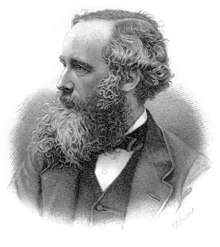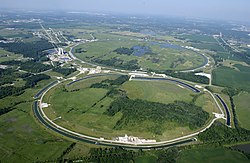General Astronomy/The Scientific Method
| General Astronomy | ||
| Scientific Notation | The Scientific Method | What People do in Astronomy |
The results of scientific thought have played an important role in shaping the world into what it is today. This is true not only because of the influence technology has had in our lives, but also because of the change science has brought to the way we think. Scientific thinking has permeated all aspects of our lives, fundamentally changing the way we see the world. It is science's "way of thinking," the scientific method, that forms its heart. Although "scientific thought" or "science" is sometimes taken to refer to the entire body of scientific theories and knowledge including chemistry, biology, physics, and so on, the term science strictly only refers to the process by which these theories and ideas are examined.

The scientific method is fundamental to the investigation and acquisition of new knowledge based upon physical evidence. Scientists use observations, hypotheses, and logic to propose explanations for natural phenomena in the form of theories. Predictions from these theories that can be reproducibly tested by experiment are the basis for developing new technology.
Although scientific progress is often described as a linear scheme that allows a single scientist to proceed from a state of relative ignorance to a state of knowledge, the scientific method is really much more complicated than this. The scientific method is not a recipe. It requires intelligence and imagination. Science is not the lifeless execution of step-by-step instructions, but a creative and inspired process. Over the past half-century, philosophers, historians, and sociologists of science have established a more complete model describing the ways science is actually practiced.

The modern description of scientific progress gives much more importance to the role of the scientific community. It is impossible for a single person working in isolation to engage in science. This is because of the central role of peer review as a means of correcting error, bias, and self interest. Human nature prevents even a well intentioned scientist from doing anything other than confirming preconceived ideas when working in isolation. Because science is closely tied to a community, progress is usually scattered, proceeding from many stages and different directions at once.
In a new area of scientific exploration, scientific progress is slow at first. Investigators reach out in search of a basic description of how their area of inquiry works. This inquiry is motivated by observations of some interesting phenomena manifested in reality. The observations and experiments undertaken by scientists in a developing field are typically dictated by the scientists' interests and by convenience. The scientists have no heritage of successful experiments and little common ground. Because of this, new pursuits in science lack direction and are wanting of a broad common ground that will unite scientists and prescribe the course of scientific research.

As the new field advances, an underlying set of principles begins to take hold and gain widespread acceptance. These principles become the common ground of scientists in the new field, the basis of a paradigm. With a paradigm in place, researchers no longer need to start from scratch when interpreting the results of new experiments. Instead, they address a specialized audience that works under a common paradigm, and they describe their work in the context of that paradigm. They are no longer unguided in the direction of the work — the paradigm dictates which experiments might be useful in further exploring the questions of their field. An established paradigm is therefore an extremely valuable asset in the pursuit of science.
In the presence of an established paradigm, the normal course of scientific research begins. Scientists seek to clarify the understanding of their area of research by formulating theories grounded in their paradigm and by making relevant observations that test the theories and further clarify the paradigm. The observations give greater insight into the paradigm and test the agreement of theories and paradigms with reality. The theories discern previously unseen details in the paradigm and in nature, and guide the method of new observations.
For the normal course of scientific progress, these methods are extremely efficient. In some cases, however, a scientific discipline might be founded on a paradigm that is fundamentally incorrect. This presents a problem, since the paradigm underlying a discipline is deeply valued by the practitioners in the discipline. Such was the case in astronomy during the scientific revolution of the Renaissance. From the times of Aristotle, it had been thought that the Earth was at the center of the Universe, with everything else moving around it in circles. Eventually, observations of the positions of the planets made Aristotle's model inconsistent with reality. As time passed, it became increasingly difficult to modify Aristotle's paradigm to agree with observations. The prospect of a new and completely different paradigm became ever more attractive, and the new idea of a Sun-centered universe took root.
It is almost always the case that some observations cannot be explained by existing scientific theories, but a gap between knowledge and theory is hardly sufficient to produce a paradigm shift. In The Structure of Scientific Revolutions, Kuhn claims that scientific revolution is only possible when the dominant paradigm of a field is in a state of crisis. Only once it becomes apparent that the ideas tied to the paradigm are irreconcilable with observations does it begin to appear sensible to pursue completely new explanations.
When scientists consider theories, either as candidates for a new paradigm or as elaboration for an existing paradigm, they evaluate theories on the basis of a number of criteria that have proven over the years to be relevant indicators of usefulness. These criteria were described by the philosopher of science Karl Popper in his book, The Logic of Scientific Discovery.
The central goal of science is to produce theories that are consistent with reality. Science approaches this goal by testing a theory for validity, and discarding or modifying the theory if observations can't be shown to agree with it. The use of an approach like this requires that theories be falsifiable. In order for a theory to be scientific, it must be relevant to observable aspects of reality. It must be possible, at least in principle, to make observations that would be inconsistent with the logic of the theory. Said otherwise, the theory must make non-trivial predictions that can be tested by a set of observations. If scientists find that a theory's predictions are incorrect, the theory is falsified. A central property of scientific theories is that they can never be proven, but they can eventually be disproved. This fact makes it essential that a theory make specific, useful predictions before it can be examined scientifically.

The need for falsifiability implies a need for theories that make clear predictions. Theories that make strong predictions are said to have a high predictive power. A theory with high predictive power makes bold, clear and testable predictions. Theories with high predictive power are more highly valued in science because they are more easily falsified. Scientists consider theories that have not been falsified despite strong predictions to be more reliable, whereas a theory that makes fewer predictions or less bold predictions tends to be received with more skepticism.
The requirement that scientific theories have strong predictive power leads to the surprising notion that an implausible theory should be preferred over a plausible theory. This is because the claims made by the implausible theory are bolder and more subject to being falsified. In order to succeed, a scientific theory must make a prediction that would not be expected otherwise. If a theory makes a seemingly wild claim that turns out to be correct, the theory is very well supported. This mechanism for developing scientific ideas by creating and testing the predictions of a model is the foundation of science.
A final requirement of scientific theories is that they be as simple as possible while still accurately describing nature. This requirement was famously stated by the English logician and Franciscan friar William of Ockham. He stated the requirement, in Latin, as
- Numquam ponenda est pluritas sine necessitate,
which translates roughly as
- Assertions should not be multiplied unnecessarily.
This maxim is widely known as Ockham's Razor. It is a very useful principle, but also one of the most misused doctrines in science.
Ockham's razor warns us that, when two theories make identical predictions, the theory that relies on fewer assumptions is more likely to be correct. The razor is based on the principle that reality is unlikely to conform to our presuppositions. In the absence of evidence, it's often wiser not to speculate.

When creating theories or distinguishing between competing theories, scientists rely on two distinct types of reasoning: inductive reasoning and deductive reasoning.
Inductive reasoning works from the specific to general. It involves making observations and building generalizations on the basis of observations. For instance, you might observe the sunrise every day for a year, and you notice that this Sun rises more or less in the east every time. You might conclude that the Sun always rises in the east. Inductive reasoning involves drawing conclusions from a limited sample of information. You have no way of knowing that the Sun won't rise in the west tomorrow. Still, a pattern will become apparent as observation continues, and year after year of observation makes it compelling to imagine that the Sun must always rise in the east. If the pattern remains very consistent, it can be considered reliable even if the underlying cause isn't obvious. Should a theory ever be presented that predicts that the Sun will always rise in the east, that theory will be well supported. On the other hand, if a theory predicts that the Sun will sometimes rise in the east and sometimes in the west, that theory will be disfavored by the observations even though it isn't disproved in a strict sense. Notice that it is possible, though unlikely, for inductive reasoning to discredit a correct theory or support an incorrect theory. Although it is a powerful and essential tool in science, inductive reasoning must be treated with skepticism when based on a very limited sample of observations.
Deductive reasoning works from the general to the specific. It is based on logical arguments (syllogisms). An example of deductions invented by the author Lewis Carroll is provided below:
- All lions are fierce.
- Some lions do not drink coffee.
- Therefore, some fierce creatures do not drink coffee.
Unlike inductive reasoning, deductive reasoning is perfectly reliable if you have made correct assumptions and applied correct logic. Because deductive reasoning is absolutely reliable when used with good assumptions and proper method, it is easy to place undue trust in claims made on the basis of deductive reasoning. It is important to remember that these claims also require careful examination to check that the assumptions are good and the reasoning is valid. In reality, deductive reasoning is as much subject to error as inductive reasoning. Only the sources of error differ.
| General Astronomy | ||
| Scientific Notation | The Scientific Method | What People do in Astronomy |
